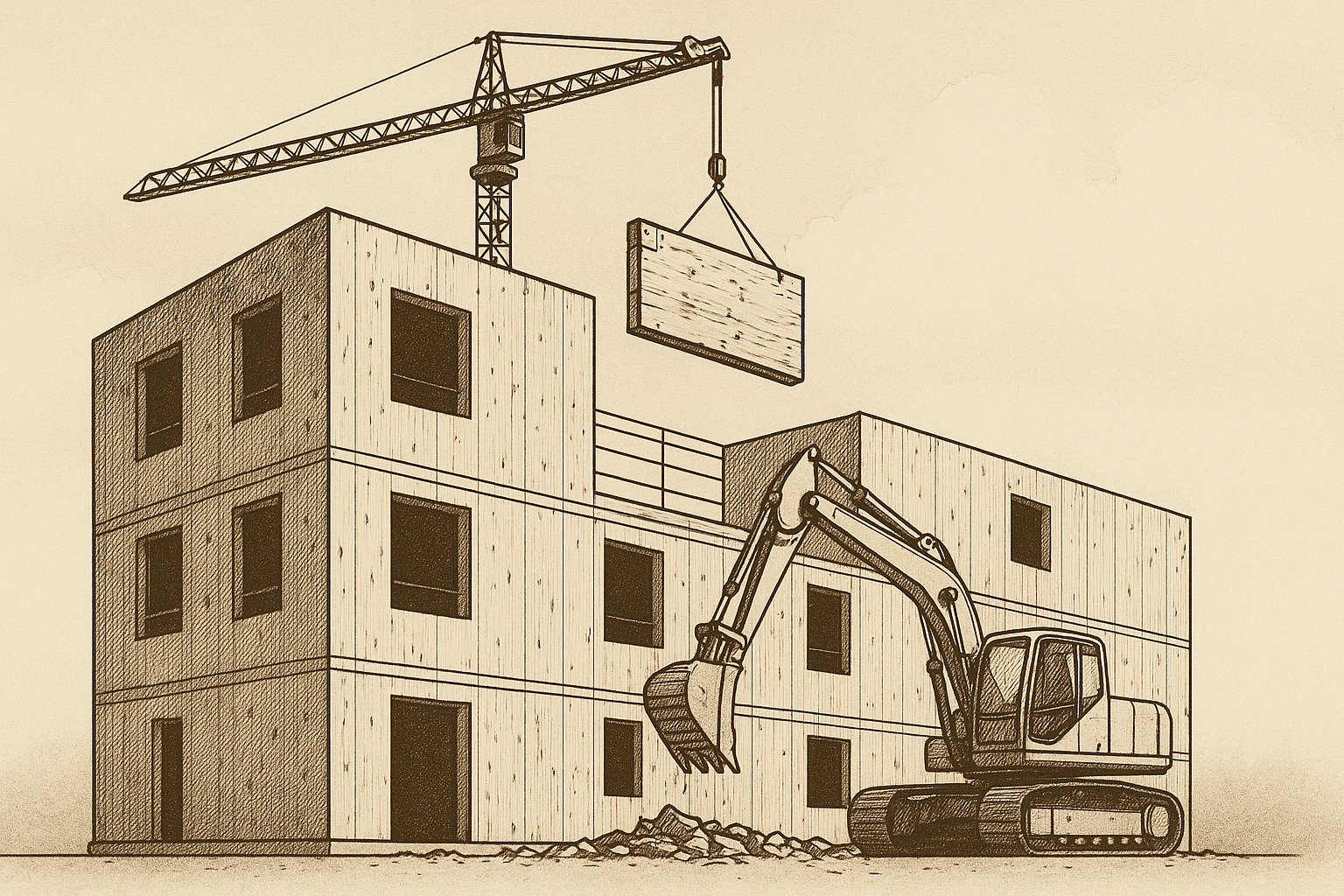The use of Cross Laminated Timber (CLT) in construction projects has increased due to the sustainability, convenience and design flexibility the material offers.
Although the use of CLT in construction projects is not new, wider usage has made it more important for the demolition industry to understand potential challenges and engineering considerations these structures may present.
As usage increases, there will be more demand for expertise in CLT structure demolition as they start to reach the end of their design life.
What Is CLT (Cross Laminated Timber)?
CLT is an engineered timber product made by layering and gluing sheets of timber at right angles, creating strong, load-bearing panels. CLT is becoming increasingly common in construction projects due to its;
- Sustainability: Potential for reduced carbon impact compared to traditional materials
- Speed of Construction: Prefabrication off-site allows quicker assembly on-site.
- Design Flexibility: Large-scale, pre-cut panels enable innovative building shapes & layouts.
CLT Demolition Challenges
There have been cases where moisture ingress or poor construction practices have compromised structural integrity.
This develops due to moisture trapped during construction, service leaks/condensation or poor maintenance leading to rotting and degradation of the CLT.
This degradation poses a unique engineering challenge for demolition contractors when dealing with CLT structures in comparison to traditional construction techniques.
CLT Demolition Engineering Approach
The approach to the demolition of CLT structures will be similar to other high risk structures such as Large Panel Systems (LPS).
The degradation of the CLT in a structure will result in;
- Different demolition methodologies dependent on site investigation and condition surveys of the structure.
- Enhanced safety precautions particularly in confined city centre environments where mechanised demolition using large plant is not possible.
- Limited reusability of elements reducing sustainability of the structure.
When approaching the demolition, engineers will need to conduct a thorough investigation including detailed surveys, moisture content analysis and structural checks to ascertain the structural integrity of the structure before deciding on a demolition approach.
The demolition methodology will also need to be adapted to factor in the structural instability which could mean more manual or piecemeal demolition methods are adapted.
Over time, as more guidance becomes available from industry groups, the demolition process for CLT structures should become clearer and more straightforward.


